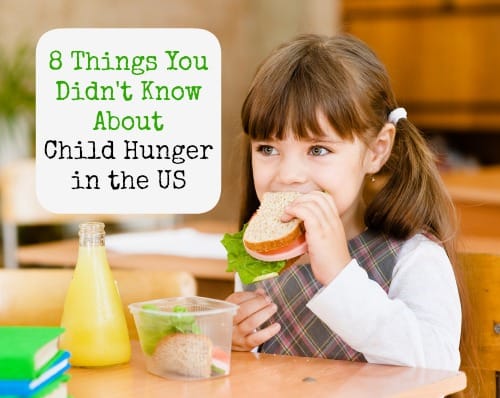
This post is a sponsored guest post and content was provided by the YMCA.
If you think childhood hunger is a third-world problem, you should think again. One in five children in the United States live in a household that struggles to put food on the table.
Learning more about the problem is the first step in finding a solution. Here are eight things you might not know about childhood hunger.
1. More than 16 million children live in food insecure households – enough to fill more than 845 basketball stadiums. The top five states with the highest rate of food insecurity are New Mexico, the District of Columbia, Arizona, Oregon and Georgia.
2. More than 9.8 million children get free or reduced price school breakfast, but more than 10.6 million eligible children go without.
3. Half of all the individuals who use the Supplemental Nutrition Assistance Program, or SNAP, are children. The average monthly SNAP benefit per person is less than $1.50 per person, per meal, and about 90 percent of SNAP benefits are redeemed by the third week of the month.
4. About 62 percent of teachers reported that they regularly see children come to school hungry because they don’t have enough to eat at home.
5. Hungry children are more likely to experience short- and long-term health problems, headaches, stomachaches and hospitalization. In fact, children from food insecure households are 31 percent more likely to be hospitalized at least once since birth as compared to children growing up in food-secure households.
6. Childhood hunger can lead to behavioral problems. Children who experience hunger are two-thirds more likely to be at risk of developmental and behavioral problems than children who have enough to eat.
7. Teachers are the first line of defense fighting childhood hunger during the school year, helping families enroll in free or reduced-price meals or referring families to resources in the school. More than half of teachers purchase food for hungry children in their classrooms, and at least 10 percent say they buy food every week.
8. Households with children report a higher food insecurity rate than households without children.
In addition to these sobering statistics, of the 30 million children who receive free or reduced-cost meals through the National School Lunch Program, only 2.3 million continue to receive meals throughout the summer through the USDA’s Summer Food Service Program. This means once school is out for the summer, some children are losing their main source of nutrition.
The YMCA of the United States has partnered with the Walmart Foundation to provide 5 million meals and snacks to more than 150,000 children and teenagers this summer. The summer food program is open to children and teens ages 5 to 18 in more than 1,000 communities nationwide. In addition to nutritious and delicious meals, the summer food program will provide activities and learning opportunities for these children to help them get their fill of food and fun during the summer.
To learn more or to find a Y in your community, visit the YMCA Summer Food Program website.
This post is a sponsored guest post and content was provided by the YMCA.

